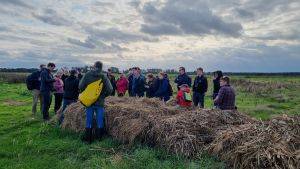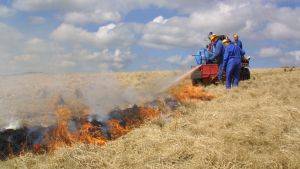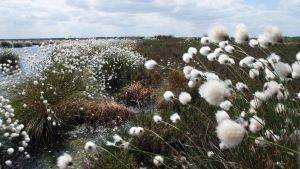The Canadian horticultural peat industry
Introduction
Canada is a major producer and exporter of peat for horticultural uses. The horticultural peat industry has funded major restoration research over the past 20 years, along with government agencies and academic institutions.
Description
Canada is a major producer and exporter of peat for horticultural uses. The industry produces about 1.3 million metric tons of peat per year. Of the estimated 113,6 Mha of peatlands in Canada, nearly 25,000 ha are, or were at some point in the past, drained for peat harvesting. Some 14,000 ha are currently being actively managed. In the Canadian context, generally only Sphagnum-dominated peatlands with a peat thickness of 2 m or greater and an area of 50 ha or greater are of commercial value for the industry. At the end of the production, sites typically still have a relatively deep peat layer (> 0.5 m depth) and ombrotrophic conditions that help the restoration processes.
Project Aims
The horticultural peat industry has funded major restoration research over the past 20 years, along with government agencies and academic institutions. In total, more than $5,000,000 CDN has been invested by the industry to investigate ways to accelerate the restoration of bogs and to enhance their environmental functions. The goal is to re-establish self-regulatory mechanisms that will lead back to naturally functioning peat accumulating ecosystems.
Restoration Delivered
The research outcomes have been incorporated into the policies and practices of the Canadian industry. They have helped to inform new legislation, regulations and policies regarding responsible peatland and wetland management within national and provincial governments. In the province of Quebec, the industry benefits from a partnership with the Ministry of Finance and Economy that has resulted in large restoration projects, along with the training of peat companies’ employees and the development of different tools for the industry (operation guide, LCA calculator, etc.). The industry took a step further in engaging with the Veriflora® Certification Standards and the Sector Specific Annex for Responsible Horticultural Peat Moss Production and Handling. The Certification is intended to identify and encourage responsible production practices and to stimulate continuing improvement in the industry. One requirement of this certification engages the producer to restore all “new” post-harvested areas. After conducting a Social and Environmental Life Cycle Assessment, the industry is now working on its first Social Responsibility Report that will highlight the actions taken by the sector toward responsible management and will set the stepping stones for the future.
Site Activity
The restoration approach (the ‘moss-layer transfer technique’) was developed through an extensive research program and is based on two main actions: 1. Active reintroduction of peat bog plant species, along with various techniques to improve micro-environmental conditions for plant establishment 2. Rewetting Machines widely used for agricultural or peat extraction purposes can be used to collect and spread plants and mulches, making these techniques compatible with the restoration of large peat surfaces. Monitoring of restored sites shows that typical bog plant cover establishes within a few years following restoration and is dominated by Sphagnum mosses. Restoration also returns the organic matter accumulation to values that are comparable to those of natural systems. The hydrological conditions necessary for moss establishment are improved as the water table rises quickly after ditch blocking, although it still fluctuates more than in natural peatland 10 years after restoration. Research suggests that it will take between 15-20 years to accumulate a thick enough moss layer (acrotelm) to regulate the water. It is also predicted that annual carbon balance can be returned to near natural conditions within 10-15 years following restoration.
Project Name: The Canadian horticultural peat industry
Organisation / Lead partner: Peat Moss Associations in Canada
Predominately: Upland










